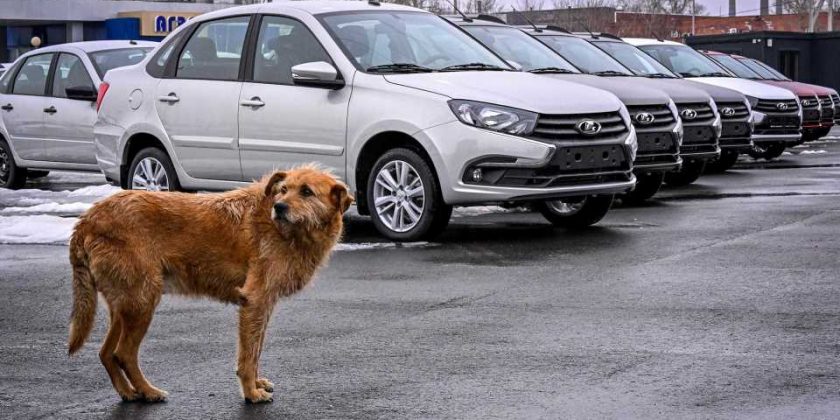Even though Russia’s currency, the ruble, has apparently stabilized after going into a free-fall in the face of crushing global financial sanctions in response to the invasion of Ukraine, its car market is still going for quite the ride. According to Automotive News Europe, car sales in Russia were down over 60 percent in March, effectively the first full month of its incursion into Ukraine. It probably seems obvious that global automakers boycotting the Russian market, financial sanctions on the banking system, and worried Russian citizens pulling back on extra spending with the expectation of a recession or worse that car sales might not be okay there—but the reasons for this severe sales drop-off are as intertwined as they are varied.
Take the ruble’s rollercoaster ride over the past two months. Fairly soon after the U.S. and other nations imposed brutal sanctions on overseas Russian financial holdings, the movement of money in and out of Russia, and on key figures and oligarchs close to the Kremlin, the ruble’s value plummeted relative to the dollar. Feverish machinations by Russia’s equivalent to our Federal Reserve (a central bank), headlined by a foundational interest rate hike to as high as 20 percent, shored up the country’s currency. But consider the consequences of such an interest rate: Taking out loans for, say, a car or home in Russia has got to be astronomically expensive right now, which likely is curtailing demand.
Here in the U.S., the Fed raised interest rates only slightly, and customers have noticed mortgage rates and car loan rates rise in lockstep; mortgage interest rates have almost doubled since the end of last year—and even then, to “only” 5 percent. The difference in America, of course, is that the economy is still cooking along hot enough to drive inflation, and the Fed’s interest rate fiddling has yet to cool demand for cars, homes, and other big-ticket items enough to bring prices under control while keeping the economy moving forward, though that is the aim. It’s a little different than purposefully kneecapping an entire country’s finances, which is what Russia is facing now.
Of course, cars in Russia aren’t merely more expensive to finance—per Automotive News, thanks to automakers ceasing production in the country or outright refusing to send cars from outside of Russia there, the supply of new vehicles has dried up, pushing prices up by as much as an estimated 40 percent. Think that thousand bucks or so you paid over MSRP for your RAV4 last month was bad? Imagine paying Maserati money for a compact Toyota SUV—that’s what a 40-percent price hike looks like.
Even taken individually, any of these debacles would leave buyers thinking twice about buying a new car instead of, say, socking money away to pay for essentials in case things get worse. Jittery citizens are the central part of Russia’s economic Venn diagram right now; whether they’re worried because of interest rates, or because the ruble was nearly rubble, or because the new car they planned to buy costs almost half again more than it did two months ago, or that car simply isn’t available at all, the end result is the same: They’re not buying cars.
Russia is scrambling to find other sources of cars, per Automotive News. It’s looking domestically, though sanctions on the exports of certain car parts and chips to Russia are creating problems there, and the government is looking at importing more cars from India and China, two nations that have stayed either relatively neutral or supportive of Russia while the rest of the world turns its back on the nation. Some Russians are apparently flooding into neighboring countries not under sanction and snapping up what they can there, but there’s no getting around the impact global sanctions are having on Russia’s car market, or that they’re far, far worse than the fallout for everyone else.
Hot Reads
2022 GMC Hummer EV Pickup First Edition First Test: HAHA OMG WTF
Watch the 2023 Honda Civic Type R Go For a Little Rip Around Suzuka and Set the Lap Record
2023 Hyundai Palisade SUV Teases Its Chiseled New Face
2024 Volvo Embla EV: Everything We Know About the New Flagship SUV
2023 Mercedes-AMG SL43 First Look: A Four-Cylinder Sports Car With F1-Derived Turbo Tech
Source: Read Full Article
